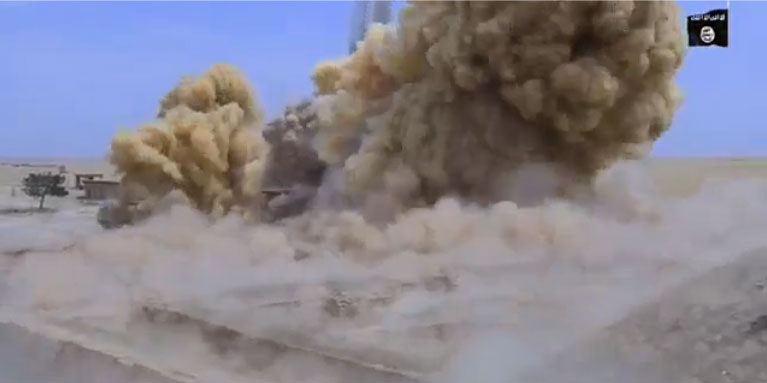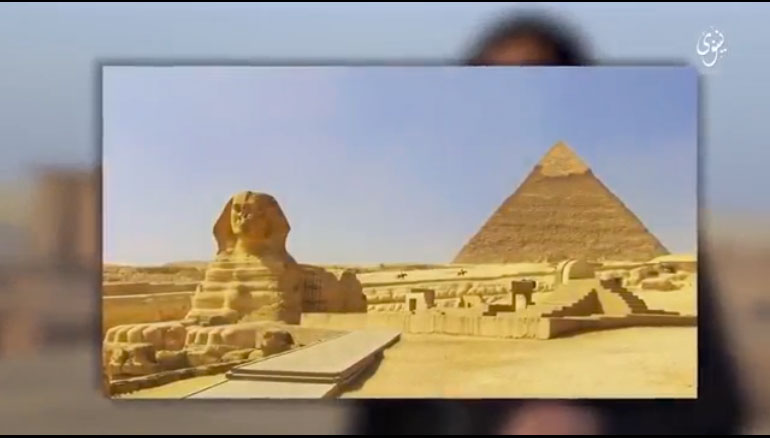ISIS militants have detonated explosives at the ancient Temple of Nabu at Nimrud, Iraq, according to video footage released by the terrorist group earlier this week. The video also includes further evidence of the group’s destruction of the historic gates of Nineveh, and a threat to attack the Egyptian pyramids at Giza.
Screenshot from the video that purportedly shows ISIS militants destroying the Temple of Nabu in Iraq.

The Temple of Nabu was built in the 9th century BC during the reign of Ashurnasirpal II, and is dedicated to the Babylonian god of wisdom. It forms part of the wider archaeological site of Nimrud, an ancient Assyrian city 30km south of Mosul on the Nineveh plain. The video shows explosives being detonated under the temple’s so-called ‘Fish Gate’, which gets its name from a set of statues of mermen that flank the entrance arch. Significant damage appears to have been caused both to the structure itself (which was reconstructed in the modern era) and the sculptures, parts of which can be spotted in the rubble. Satellite imagery released by UNITAR (the United Nations Institute for Training and Research) on Wednesday confirms that the destruction occurred sometime before 3 June, when the pictures were taken.
Extensive damage to main entrance of Nabu Temple #Nimrud #Iraq as of 3 June sat img @DigitalGlobe @UNESCO @UNITAR pic.twitter.com/1ENBPRSPYY
— UNOSAT (@UNOSAT) June 8, 2016
The scenes echo ISIS’s destruction of the nearby Northwest Palace of Ashurnasirpal II in April last year, and are a disturbing reminder of the terrorist group’s systematic efforts to dismantle northern Iraq’s heritage. The video also shows bulldozers being taken to the Mashki and Nergal gates at Nineveh. Their desecration was announced by the group in a series of photographs last year, but new footage of one of the colossal lamassu statues at the Nergal Gate being toppled suggests the damage is more extensive than originally thought. ‘This suggests’, archaeologist and historian Christopher Jones noted on Wednesday, ‘that ISIS has gone back to re-destroy artifacts that it already destroyed once, in order to get footage for new videos.’
Screenshot from a video purportedly showing ISIS militants destroying monuments in Iraq. The video concludes with a threat to attack the Great Pyramid at Giza.

ISIS claims to be destroying heritage sites in the Middle East on ideological grounds, to cleanse the region of an idolatrous past. But it is also part of a major propaganda effort directed at the West. If there were any doubt over this motivation, it’s surely dispelled in latest video, which concludes with an image of the Great Pyramid at Giza, and a promise to demolish the site. Egypt’s security forces have subsequently responded to the video, dismissing the threat, but this week’s news comes as a hard reminder after the widely publicised recapture of Palmyra, that a large number of heritage sites in the Middle East remain at immediate risk.


